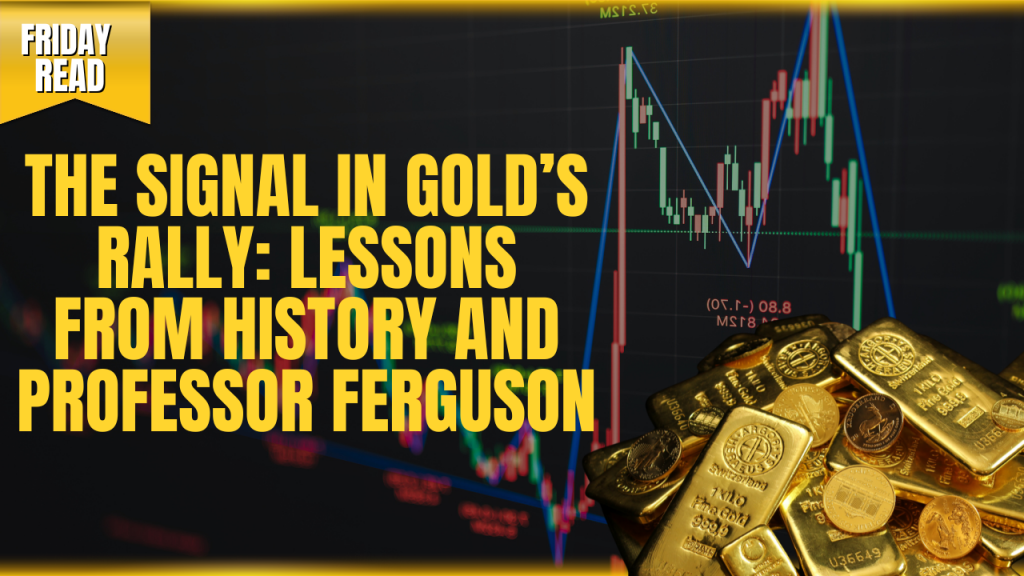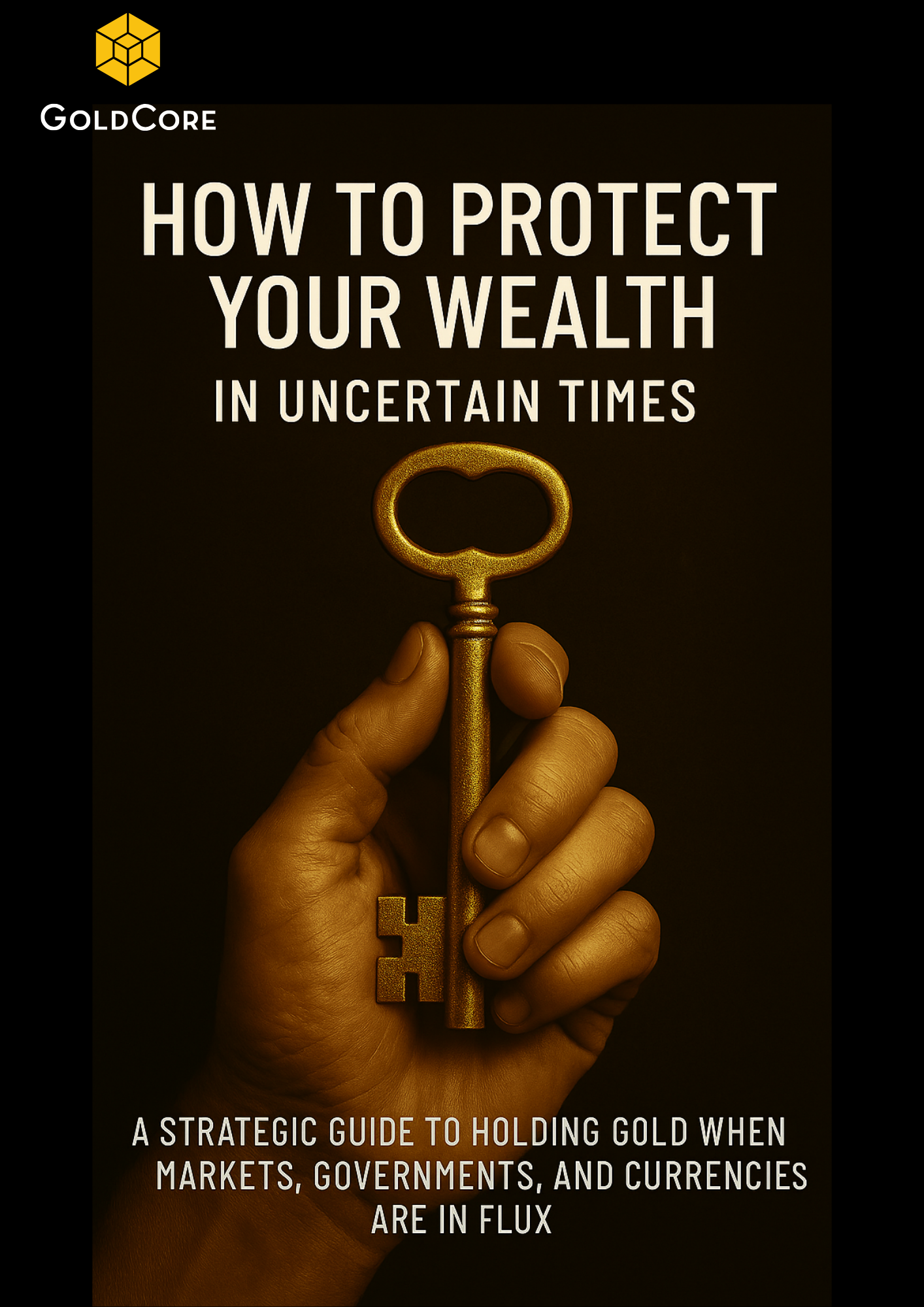
This week I listened to a podcast featuring Professor Niall Ferguson, the financial historian whose understanding of the past often sheds light on the present. As ever, it was interesting to hear another perspective on what is happening in markets, particularly from someone with such a deep sense of economic history. Much of what he said echoed themes we have discussed for some time at GoldCore, but it is always valuable to hear them framed through the long lens of history.
Gold’s record highs this year, Ferguson argued, are not about speculation but about signal. When investors quietly accumulate an asset that yields nothing, they are expressing doubt about the purchasing power of the thing in which everything else is priced: the dollar. The dollar does not need to collapse for this to make sense. It simply needs to weaken for long enough that portfolios begin to feel it. If the next chapter resembles the 1970s, with inflation and stagnation occurring together, then gold’s rise looks less like exuberance and more like foresight.
The Quiet Takeover of the World’s Collateral
He highlighted two policy shifts that will sound familiar to anyone who has followed our commentary. The first is that the United States now spends more on interest payments than on defence, a ratio last seen in the 1930s. The second is the return of tariffs, now close to levels last experienced in that same decade. Together these changes mark a clear turn away from the era of easy money and open trade that defined the past three decades. In such an environment, assets with no counterparty risk and no political dependency, such as physical gold, stand apart.
Ferguson also drew a striking historical parallel. Perhaps we are not reliving the 1970s but the 1890s. Then, a wave of innovation and capital spending built around railroads ended in the Panic of 1893, when exuberance met arithmetic. Today, something similar could be unfolding around artificial intelligence and the vast sums being invested in data infrastructure. Whether or not a sharp correction follows, the lesson is the same: cycles of innovation tend to run ahead of their cash flows, and wise investors hold assets that preserve value through the transition.
When Ferguson turned to China and Europe, the picture remained complex. China has succeeded where it matters most, in manufacturing scale, energy production and robotics, even as demographics and real estate weigh on growth. Europe faces the challenge of rearming without American leadership, while the United Kingdom risks slipping into a familiar pattern of low productivity, high taxes and weak incentives for enterprise. Ferguson suggested that it may take a revival of the spirit of the 1980s, when innovation and entrepreneurship were once again encouraged, for Britain to regain its confidence.
Much of this analysis, while eloquently put, reinforces what we have been saying for some time. The global system is shifting from efficiency to resilience, from open trade to guarded interests, and from confidence in paper promises to a renewed preference for tangible value. Gold’s strength makes perfect sense in that context. It is not a mystery or a mania, but a rational response to a changing world.
Ferguson ended on a personal note. He admitted that even those who study markets for a living make poor decisions when fear takes over. His advice was simple: stay diversified and avoid selling in moments of panic. It is an old lesson, but like gold itself, it continues to prove its worth.
Gold is not a protest against progress. It is an insurance policy against human nature. In that sense, Ferguson’s reflections are not just historical; they are timeless.
Buy Gold Coins

Buy gold coins and bars and store them in the safest vaults in Switzerland, London or Singapore with GoldCore.
Learn why Switzerland remains a safe-haven jurisdiction for owning precious metals. Access Our Most Popular Guide, the Essential Guide to Storing Gold in Switzerland here.
Receive Our Award Winning Market Updates In Your Inbox – Sign Up Here





